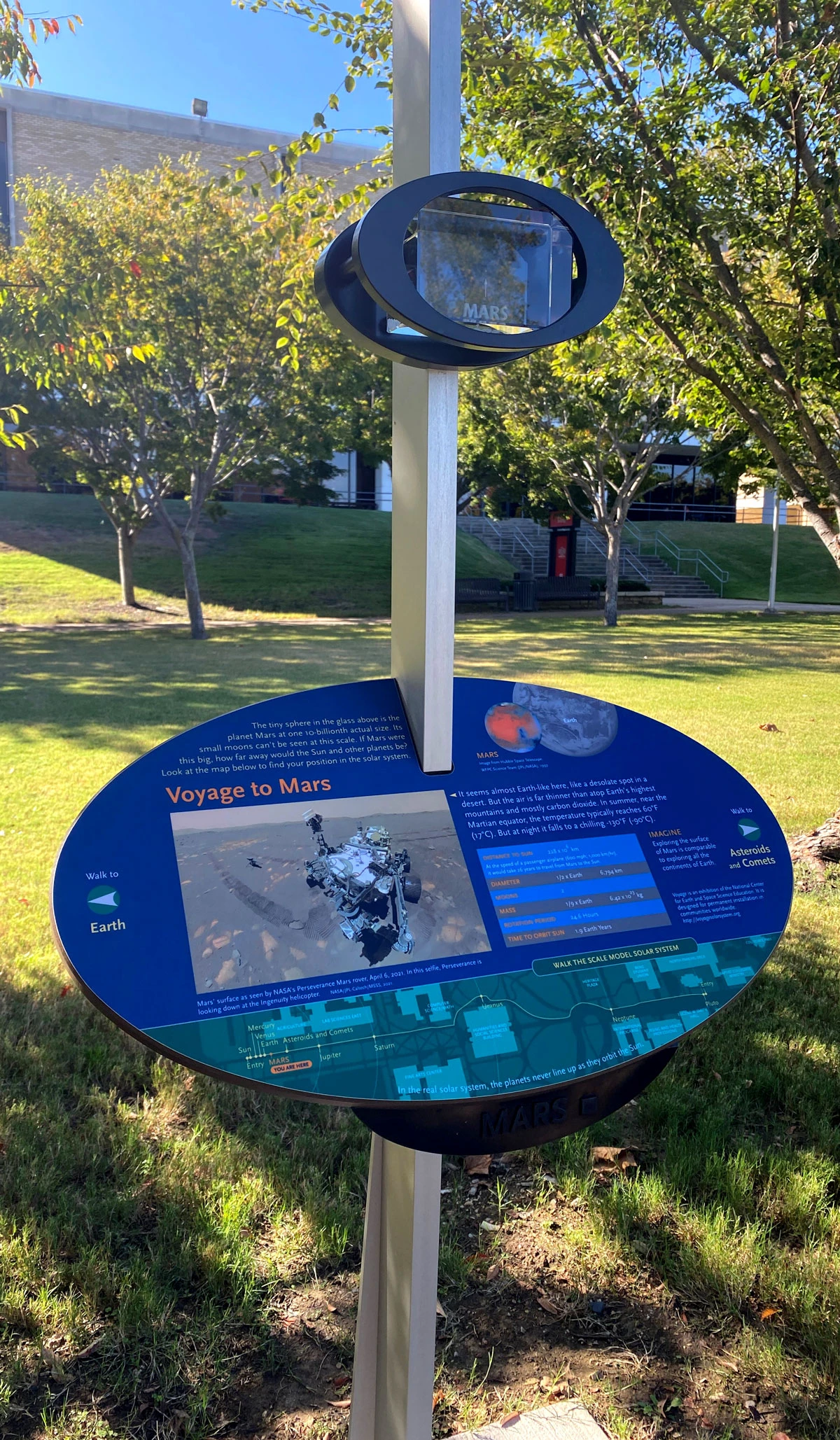Discover the Cosmos: Voyage Model Solar System Installed on A-State Campus

JONESBORO – Just in time for the total solar eclipse next April, Arkansas State University is announcing the installation of the Voyage Model Solar System on the campus.
Voyage is funded by the Arkansas Biosciences Institute (ABI), in partnership with Arkansas State University Museum.
“The awe-inspiring exhibition will take visitors on an interplanetary journey through an incredibly detailed model of our solar system, offering a captivating glimpse into the wonders of space,” according to R. Shea Harris, outreach coordinator for ABI. “The exhibit supports ABI and A-State’s expanding role with space science research and educational opportunities such as the recent NASA WORMS (Waxworm Organic Recycling Management System) project."
Located along the green space running south to north through campus – roughly following the former site of Caraway Road – Voyage is an accurate model of the solar system at one 10-billionth actual size.
The entire route extends 2,000 feet – a comfortable 10-minute walk – from Bookout Plaza near the ABI building to the Donald W. Reynolds Center for Health Sciences, across from the North Parking Deck.
“The solar system installation is a great opportunity for our students to apply their mathematical knowledge and problem-solving skills in a real-world scenario through an exploration of scale and magnitude,” noted Dr. Amanda Lambertus, chair, Department of Mathematics and Statistics at A-State, who directed a math class assignment using the new addition to campus.
The exhibit was created by the National Center for Earth and Space Science Education and the Arthur C. Clarke Institute for Space Science Education. As a 1 to 10-billion scale model of the solar system, all dimensions depicted – including the diameters of the Sun, planets and moons, and the distances between worlds – are one 10-billionth actual size.
Thirteen interactive stanchions allow visitors to explore the solar system. Many will want to start at the Sun, near ABI and Bookout Plaza, but any sequence will work; each stanchion includes a visual guide to the location of the others in relation to campus landmarks.
“Just this week, I led two groups of 40 fifth graders through the Voyage Model Solar System,” added Jill Kary, curator of education at A-State Museum. “The subject matter inspired lots of questions and comments about the sizes of planets and their extreme temperatures. As we walked further and further from the sun, students began to understand why they were asked to walk through the exhibition. They commented on the vastness of space and the enormous distances between many of the planets."
Harris pointed out three key features of the Voyage Solar System:
-- Scale Model: The exhibit features an intricately detailed, scale model of our solar system, complete with accurate representations of planets, moons, asteroids and comets.
-- Interactive Stations: Visitors can engage with interactive stations to learn fascinating facts about each celestial body and the latest discoveries in space exploration.
-- Educational Programs: A-State offers educational programs and guided tours for students, families and astronomy enthusiasts.
The A-State Voyage Solar System is designed to inspire curiosity and a sense of wonder about the universe. It encourages visitors of all ages to explore the mysteries of space, fostering a love of science and astronomy.
The entrance to the exhibit is conveniently located on the A-State Pedestrian and Cyclist (PAC) Paths, a map of which is online.
Interested educators and others may schedule a guided tour for classes or other groups by contacting Harris, ABI outreach coordinator, rsharris@AState.edu or (870) 680-4340.
For additional information about the exhibit, one may follow Arkansas Biosciences Institute on Facebook @arkansasbiosciencesinstituteastate or visit their website.
